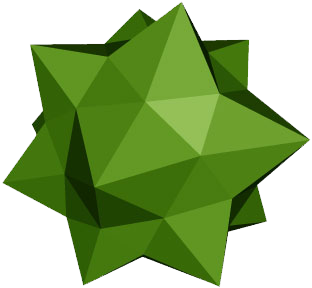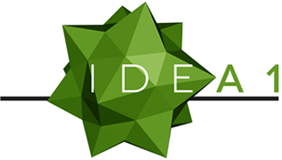UnEarthed: Anita Bruce
UnEarthed: Anita Bruce.
Anita Bruce is one of the artists who has taken part in a residency based at John Clare Cottage in Helpston, UnEarthed. UnEarthed is a partnership between five artists and the John Clare Trust to commemorate the 150th Anniversary of the poet’s death in May 2014. The five artists involved researched the life and work of Clare. This has culminated into a contemporary art exhibition, which was held at John Clare Cottage between July and September 2014. The exhibition is currently on show at Peterborough City Gallery from 7th – 30th November.
I was lucky enough to have interviewed each artist whist their installation was up at John Clare Cottage. Here is a taster of Anita Bruce’s work whist in residence at Clare Cottage, be sure not to miss the exhibit at Peterborough City Gallery ending this Sunday.
(Ruth) The Last time I saw you was at the Peterborough Museum. Since then all of the Unearthed artist’s work has really moved on and your work in now exhibited in John Clare Cottage, yours specifically in the Dovecot. Could you tell us a little about your work and why it is in the Dovecot room?
(Anita) Yes, the Dovecot in Clare’s time didn’t belong to the cottage (John Clare Cottage). It belonged to the pub next door. Doves would have been used for meat, eggs and fertilizer.
(Anita has a fabric book displayed on a plinth) The Sampler book was almost the starting point. We spent quite a lot of time in the archives of John Clare. I was really interested in actually seeing Clare’s writing; not necessarily the content but more his physical writing. It felt like a real connection with him.
When Clare was out in the fields he would scribble down bits of poems and ideas, writing on whatever came to hand - envelopes, till receipts. He even wrote on the bark of trees – so there’s a collection in the archive of what he calls his ‘scraps’ in an exercise book. They’re written in pencil that he’s rubbed out and rewritten over the top, there’s ink that has eroded the paper. It felt like him when he was being his most real. He would then write out his poems neatly in a manuscript book; but those initial ideas I thought were really quite powerful and really what I have taken from the archive.
So the book is like a sampling of ideas for working with text, working with birds and working with bird song in fabric and stitch. Its my version of those little found jottings that were in the archive.
(Anita had a series of 30 fabric birds hanging from the ceiling in the dovecot)
The birds themselves are actually covered in writing, taken from his manuscripts. It is layered and printed at random angles reflecting Clare’s notes or ‘scraps’. Its not meant to be necessarily legible. They also include some of my own asemic writing (written using my own calligraphy, but layered and written on the back and front of transparent paper, such that it forms a pattern). The viewer may recognize it as writing without being able to actually read what it says.
The writing is mainly short lines from Clare’s poetry, lines about bird song that seemed significant to me. Clare wrote a lot about bird song, he was one of the first people that actually wrote down what birds really sounded like, so it wasn’t just ducks quacking and sparrows cheeping it was actually the sounds that they really made. I have also incorporated stitched sonograms in the book. The sonograms to me equate to the birds writing.
(Ruth)The book is really textual which is lovely with embodied writing etc, it makes it really inviting for the viewers to look through.
(Anita) It’s a difficult problem with textiles, the tendency is to put textiles behind glass to protect them and with a book you need people to turn pages. I think with textiles one of the things that makes them what they are is their feel, they are a sensory experience. I’m not mega-precious about the book, in the same way as John Clare wasn’t really that precious about his little scraps of paper (he would probably be totally amazed that the archive now has his writings that on till receipts). It’s the same idea really. In away it will be interesting to see at the end of all the exhibitions (The exhibition is being shown at John Clare Cottage, Northampton and Peterborough) because it will have a human touch to it I think.
(Ruth) I really enjoyed how everyone’s work has been displayed within the various locations in John Clare Cottage everyone’s work is quite site specific. Did you always envisage your work would be displayed in the Dovecot?
(Anita) Yes, I particularly like the Dovecot as a space. I thought I would use the Dovecot before I knew what I was going to create. There was an element of us all choosing our spaces, but then having to adapt, but yes I laid claim to the Dovecot!
Actually, the idea of making three-dimensional birds came from a comment that Lucy said, just in passing, about filling the Dovecot with birds. My intention was to represent birds but I thought originally they would be in the pigeonholes. The idea of referencing the text and bird song came in really early as I was working with bird song for another project. This year I just seem to be particularly aware of it.
The work ticks a few boxes for me, I prefer to work three dimensionally, with textiles; I’m not really the sort of person that likes to hang pieces on the wall and frame them. And I suppose working with birds as well; they were the first thing I was interested in as a kid. My Granddad used to take me out bird watching at an early age so I have always been interested in birds, but they have only really started to appear in my work over the last few years.
(Ruth) I noticed that three of the birds are blue, could you tell me your thoughts behind this?
(Anita) When Clare was in Northampton (he was in an asylum before he died) the last few things he wrote were on blue writing paper. His very last poem ‘Birds Nests’ was written on this paper. It’s quite a moving poem. In the text you can see the change in his handwriting and how his hand was beginning to fail, hence the blue fabric. ‘Birds Nests’ is one of the poems printed on the fabric that the birds are made from, along with some of the other bird poems and part of one of his ‘bird lists’.
A short video clip of Anita at Peterborough Museum prior to the finished exhibit at John Clare Cottage.
https://www.youtube.com/watch?v=2UQODK_nYTQ







